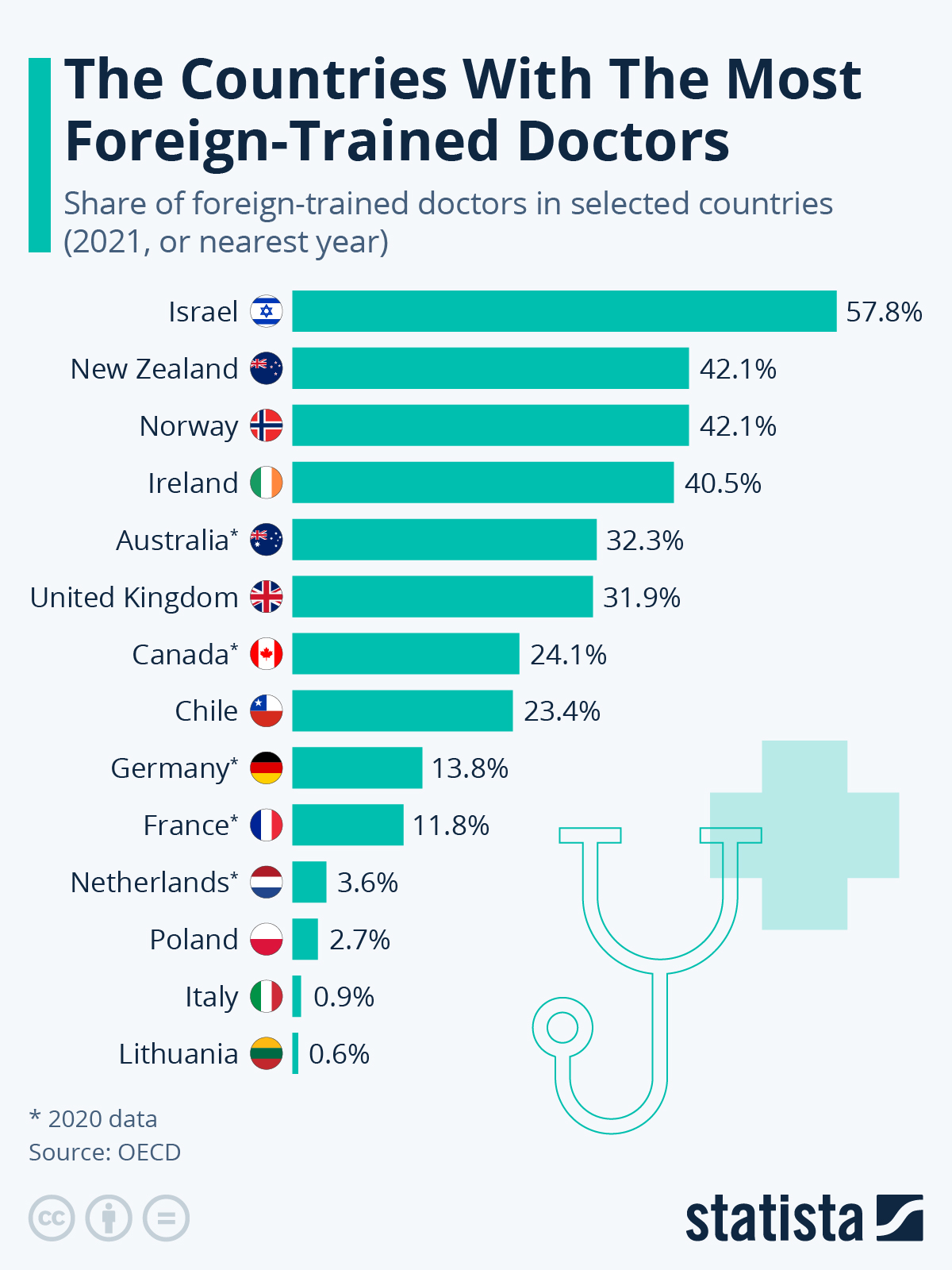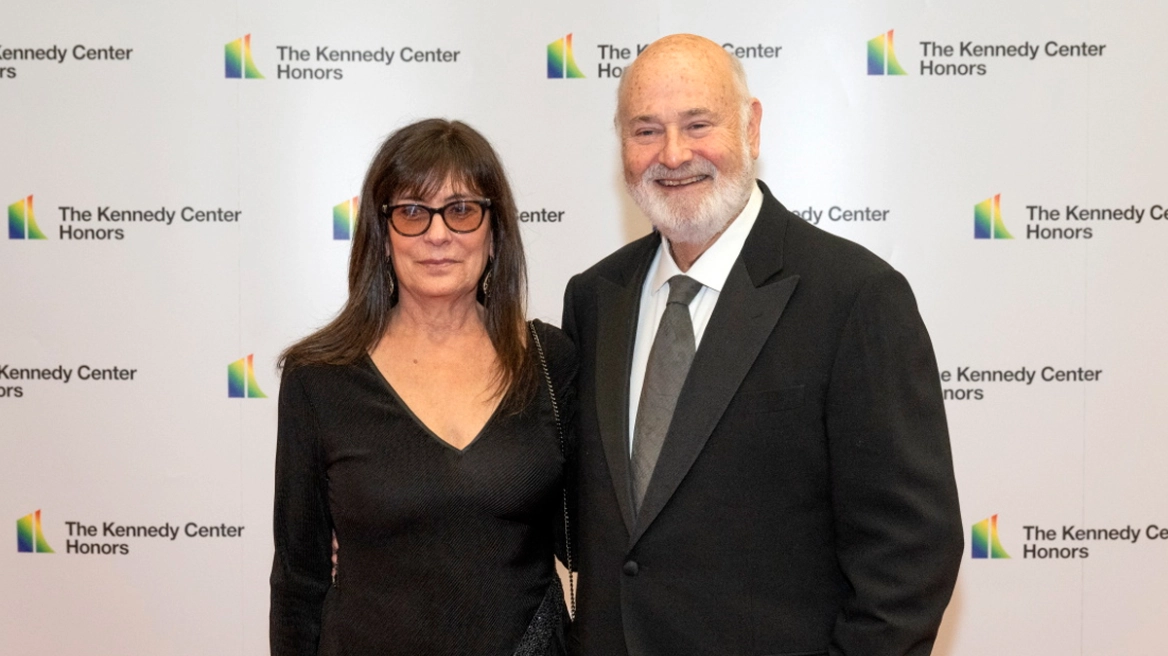The UK saw its biggest NHS strike in history this past week, as workers call for pay rises amid the country’s skyrocketing inflation rates.
Once championed as a leading example of healthcare worldwide, the country’s national service has become overburdened, with healthcare workers and patients feeling the brunt of cuts, stretched budgets and a lack of staffing, as employees quit over long and busy working hours, leading to record-long waiting times.
A recent report from The Guardian found that Brexit has added to the NHS’ woes, with some four thousand fewer European doctors choosing not to work in the NHS than if the country had remained in the European Union.
As the following chart shows, the UK is highly dependent on foreign-trained doctors, with nearly a third of its practitioners coming from abroad. These figures come from the OECD’s Health Workforce Migration dataset, which compares the share of foreign-trained doctors across its member states. And it’s not alone, healthcare workers who were educated abroad play a vital role in maintaining the proficiency of health systems in many OECD countries, with Israel reporting the highest share of foreign trained-doctors at 57.8 percent, followed by New Zealand and Norway jointly at 42.1 percent, then Ireland at 40.5 percent.
Foreign-trained doctors also include native-born people who were trained overseas. In a number of countries, including Israel, Norway, Sweden and the United States, this share is large and growing. In the United States, for example, one-third of international medical graduates in 2017 were American citizens that had trained abroad.
You will find more infographics at Statista
Ask me anything
Explore related questions






